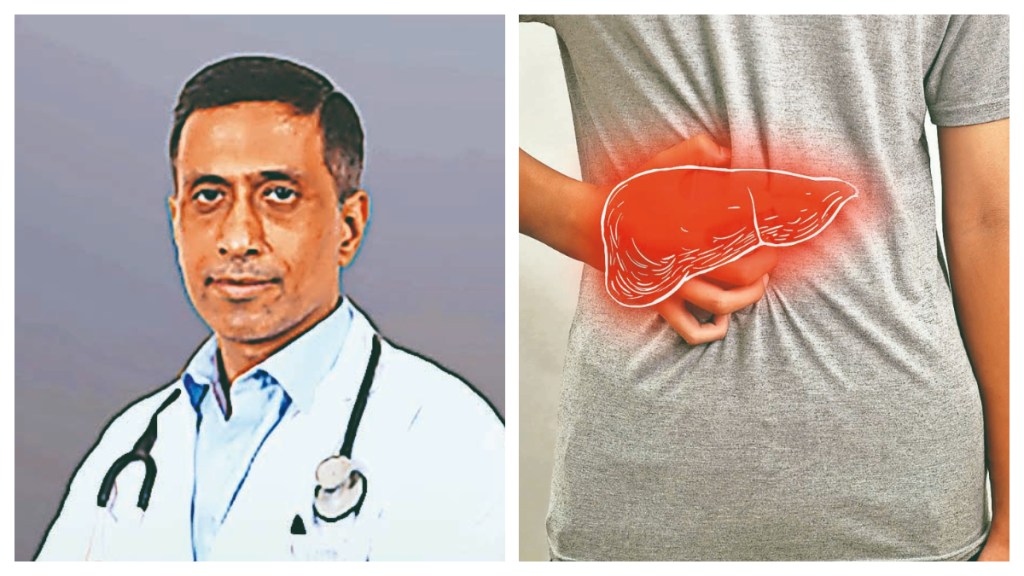Inactive people are susceptible to a host of diseases. A fatty liver is the most common. Dr Sudeep Khanna, senior consultant, gastroenterology, Indraprastha Apollo Hospitals, explains the link between sedentary lives and fatty liver disease. “A sedentary lifestyle is a significant risk factor for fatty liver disease (non-alcoholic fatty liver disease or NAFLD). Lack of physical activity leads to reduced metabolism, insulin resistance, and increased fat storage in the liver.
When the body is inactive for prolonged periods, it burns fewer calories, making it easier for excess fat to accumulate in liver cells. Reduced muscle activity impairs the body’s ability to regulate blood sugar and lipid levels, further worsening liver health. Studies have shown that people with inactive lifestyles have a higher risk of developing liver inflammation, fibrosis, and even cirrhosis. Regular physical activity, such as walking, jogging, or strength training, helps reduce liver fat, improve insulin sensitivity, and support overall liver function, making movement an essential part of liver disease prevention and management.”
Is diet a bigger factor or lack of exercise in liver issues?
Both diet and lack of exercise play critical roles in fatty liver disease, but an unhealthy diet is often the primary trigger. High consumption of refined carbohydrates, sugars, and unhealthy fats leads to excess fat storage in the liver. Sugary drinks and processed foods increase insulin resistance, making it harder for the liver to process fats, which then accumulate over time. However, lack of exercise worsens the condition by slowing metabolism and reducing the body’s ability to burn fat. Physical activity helps regulate blood sugar levels, improves fat metabolism, and reduces inflammation, all of which are essential for liver health. While diet directly influences fat accumulation, exercise helps in fat breakdown and energy regulation. Therefore, both factors must be addressed together — adopting a nutrient-rich diet while engaging in regular physical activity is the most effective way to prevent and reverse fatty liver disease.
Can fatty liver be reversed?
Yes, fatty liver disease can be reversed, especially in its early stages, through lifestyle modifications. Since NAFLD primarily develops due to poor diet and lack of exercise, making changes in these areas can significantly reduce liver fat. Losing 5-10% of body weight has been shown to improve liver health and even reverse inflammation in some cases. A balanced diet rich in fiber, lean proteins, and healthy fats, along with avoiding processed sugars and alcohol, plays a crucial role in liver recovery. Regular physical activity, such as aerobic exercise and strength training, also helps by reducing fat deposits and improving insulin sensitivity. In some cases, doctors may recommend medications or supplements to support liver function. However, if left untreated, fatty liver can progress to more severe conditions like fibrosis or cirrhosis. Early detection and consistent lifestyle changes are key to reversing fatty liver and maintaining long-term liver health.
What are the signs to look out for?
Fatty liver disease is often called a “silent disease” because it typically has no noticeable symptoms in its early stages. However, as liver fat accumulation progresses, some people may experience fatigue, unexplained weight gain, and a feeling of fullness or discomfort in the upper right abdomen. Other signs can include weakness, nausea, and a general lack of energy. In more severe cases, fatty liver may lead to liver inflammation, causing symptoms like jaundice (yellowing of the skin and eyes), swelling in the legs and abdomen, and easy bruising. Some people may also develop dark patches on the skin, particularly around the neck and armpits, which can indicate insulin resistance. Since symptoms are often mild or absent until the disease has progressed, regular liver function tests and screenings are essential for early detection. If you have risk factors such as obesity or diabetes, monitoring your liver health is crucial.
How serious can fatty liver get?
Fatty liver disease can range from mild to severe, with potentially life-threatening consequences if left untreated. In its early stages, simple fatty liver (steatosis) is relatively harmless and reversible. However, if liver fat continues to accumulate, it can lead to non-alcoholic steatohepatitis (NASH), a more severe form of the disease characterised by inflammation and liver cell damage. Over time, this inflammation can cause fibrosis (scarring), which may progress to cirrhosis — a condition where liver function is severely impaired. Cirrhosis increases the risk of liver failure and liver cancer, both of which can be fatal. Additionally, fatty liver disease is closely linked to metabolic disorders such as type 2 diabetes and cardiovascular diseases, further worsening overall health.

